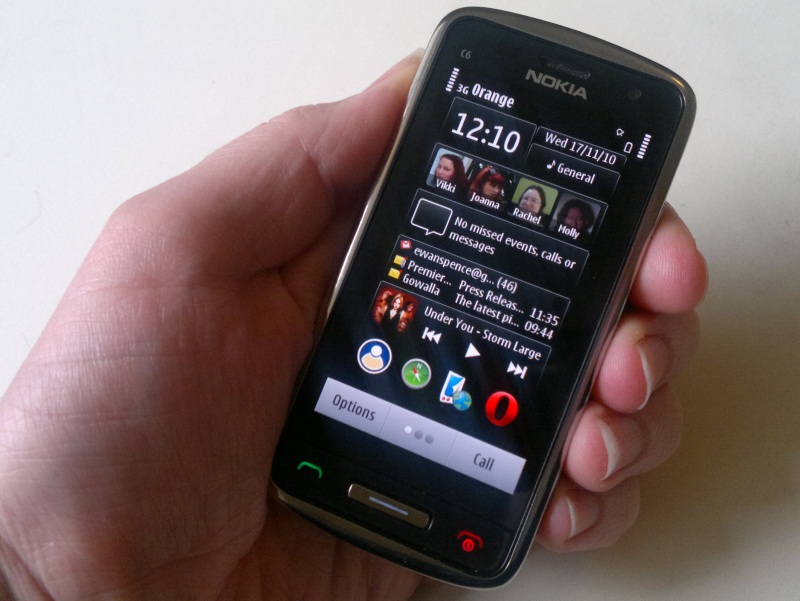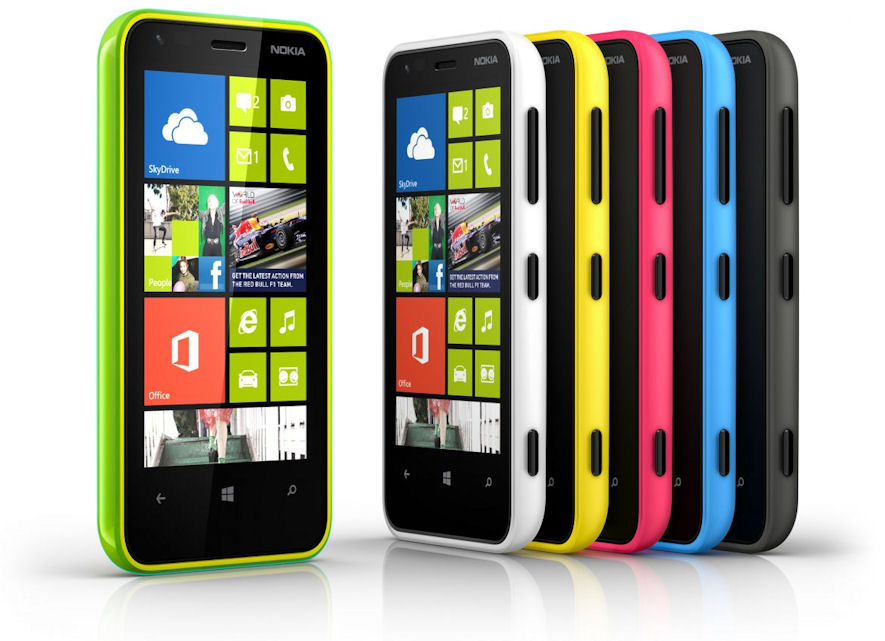If I lay out my smartphone collection in front of me, the phone that continues to catch my eye is the Nokia C6-01. This was one of the last Symbian powered devices, and it's updated to the latest version of the OS. The reason for the attention it gets? It's one of the last small sized smartphones that carried broadly similar hardware specifications as its larger brethren (in the C6's case I'm looking at the N8).
The delight of the tiny smartphone seems to be something that belongs to a bygone era. It can't have escaped anyone's notice that smartphones are getting larger. Flagship handsets are expected to break through the four inch barrier for their screens, with fast multi-core CPU's, lots of storage, run every possible frequency for Wi-Fi, 3G and 4G cellular data, NFC support, GPS and GLONASS, and so on.

The Nokia C6-01
Pack all that into a Windows Phone, and you get a nice large package to go with it. The HTC Windows Phone 8X and the Nokia Lumia 920 tip the scales and the dimensions more than most, but the signs are there across the whole smartphone landscape (such as the stretched iPhone and the constantly growing top end of the Samsung Galaxy range).
When manufacturers get round to doing the mid-range and budget models in 2012 and 2013, there's a linear relationship between the physical size of the device, and how close to the top end of the scale the specifications are.
Let's take the Nokia Lumia 620. Yes it's a Windows Phone 8 device, like the 820 and the 920, but with a screen size of 3.8 inches (fractionally larger than the Lumia 800's 3.7 inch screen), it's close to the expected size for the smartphones of 2010 and 2011. But the 620 is seriously down on the current expected specification list of a good smartphone.
Why is the form factor that I and many others love not available with the leading edge hardware?
Nokia's answer would likely be that the Lumia 620 has been built to a price and fits nicely into their portfolio, and it's easy to argue that Windows Phone 8 doesn't need that extra oomph to run comfortably (although it does help).
My point is that the choice has been taken away from the end users and the High Street. There is no pocket power-house in the Windows Phone 8 range. Take the two HTC Windows Phone 8 devices. The larger device is the higher-end device, and the lower device gets the fat trimmed off. Even ZTE's Windows Phone devices will have the smaller device as the 'cheaper and lower' device. As for Samsung, we'll need to see more than one Ativ handset, but I'll point to the Galaxy S3 and the Galaxy Mini and how they fit onto the same size/specs graph.
On a recent AAWP podcast, Rafe asked us all which of the new Windows Phone handsets we were personally looking forward to using day-to-day. Everyone else queued up for the Lumia 920. But I was looking for something smaller. At that point in time, the only minimised choice was the Lumia 820. If I was honest, it still feels like the middle ground.

Almost there, but not quite... the Lumia 620.
Now that the Lumia 620 has been announced, there's a phone that is beginning to get me excited. But I want a nice high dpi screen, I want the top end processor (because at heart I am a tech geek), and I want a stupid amount of storage, Gorilla glass, more than a VGA and a 5 megapixel camera, high quality polycarbonate casing...
Nope, I'm not allowed that. I can have the size I want, or I can have the features I want. I can't have both.
Perhaps I'm alone in this. Perhaps there's a threshold where there needs to be 7% of people surveyed wanting that form factor before a manufacturer will give it a chance. Perhaps the networks are simply following the loudest people online and going with a 'big is better' strategy and simply making sure they make sales, rather than challenge people to think about what they want from a phone and what they'll use it for.
All I know is that my personal history tells me that a diminutive Windows Phone 8 smartphone, souped up to the nines, would be my dream handset. It's not here yet, and I am worried that the bean-counters and the graph plotters have already decided that it will never arrive in the stores.
